One of the most popular planets in our solar system is the planet Mars. This planet is of special scientific interest and the subject of extensive research due to its similarities to Earth.
Here’s a long list of amazingly interesting facts about Mars.
1.) This planet is named for Mars, the Roman god of war – the equivalent of the Greek’s Ares.
2.) Mars is the 4th planet in distance from the Sun in the solar system.
3.) Mars is sometimes called the “red planet” because it appears fiery red in Earth’s night sky.
4.) If you will view Mars using a telescope, it looks like a reddish-orange disk.
5.) Mars has an atmosphere with seasons and changing weather, and its surface shows evidence of ancient water and volcanoes.
6.) The length of day in Mars and the tilt of its axis are similar to those of Earth.
7.) Mars takes about two years to circle the Sun at an average distance of 228 million km.
8.) The possibility of life on Mars is one of the major questions in astronomy.
9.) There are more space probes that have been sent to Mars than to any other planet.
10.) The red color of Mars is the result of rusty, iron-oxide mineral dust that covers the planet’s surface.
11.) The color of the sky on Mars during mid-day is reddish to pink because scattering of red light by fine dust particles.
12.) The color of the sky in Mars when the Sun is low is blue. The pinkish mid-day skies give way to bluish sunsets.
13.) Mars is a small planet with a diameter of about 6,794 km or about half the diameter of Earth.
14.) Mars has about one-tenth Earth’s mass.
15.) The force of gravity on the surface of Mars is about three-eighths of that on Earth.
16.) Mars has twice the diameter and twice the surface gravity of Earth’s Moon.
17.) The surface area of Mars is almost exactly the same as the surface area of the dry land on Earth.
18.) Mars is about the same age as Earth, having formed from the same spinning, condensing cloud of gas and dust that formed the Sun and the other planets about 4.6 billion years ago.
19.) Mars has two moons named after the sons of the Roman god Mars – Phobos and Deimos.
20.) Phobos orbits Mars once in less than one Martian day, so it appears to rise in the west and set in the east, usually twice each day.
21.) Deimos has the more ordinary habit of rising in the east and setting in the west.
22.) Mars appears as a fairly bright, red, star-like object in Earth’s night sky.
23.) As Mars and Earth orbit the Sun, the distance between them varies from about 56 million km at their closest approaches to about 375 million km when the planets are on opposite sides of the Sun.
24.) In late August 2003 Earth and Mars passed closer to each other than at any time since 1924. The two planets will not get that close again until the year 2287.
25.) When Mars is close to Earth, an observer with a telescope can usually see white ice caps at the north and south poles of Mars.
26.) These polar caps grow and shrink throughout the Martian year, just as the polar caps of Earth do.
27.) The darker areas of Mars’s surface look greenish through the telescope but this is an optical illusion caused by the contrast in color between the dark patches and the redder, brighter areas.
28.) Mars dark areas are regions of relatively unweathered dark rocks and sand, while the bright areas are regions with deposits of dusty, fine-grained oxidized iron minerals.
29.) The “canals” that people observed on Mars during the 19th century are actually another optical illusion, caused by the mind’s tendency to draw connections between irregular patches in a fuzzy image.
30.) Mars’s orbit is more elliptical than Earth’s—its nearest point to the Sun (perihelion) is about 42 million km closer than its farthest point (aphelion), compared with only a 5 million km difference between perihelion and aphelion for Earth.
31.) Mars’s year, or the time it takes to revolve once around the Sun, is about two Earth years long (687 Earth days).
32.) Mars receives less than half the amount of sunlight Earth does and is much colder.
33.) Mars is tilted on its axis by about 25° (Earth is tilted at 23.5°). This tilt gives Mars seasons similar to Earth’s seasons.
34.) The southern hemisphere’s summer on Mars is about 25 days shorter than the northern summer.
35.) Like Earth, Mars turns counterclockwise on its axis (from west to east) when seen from its North Pole and orbits the Sun in a counterclockwise direction.
36.) It takes Mars 24 hours and 37 minutes to rotate once on its axis (its sidereal day).
37.) Its solar day (the time between when the Sun next crosses the noon point in the sky) is about 24 hours and 39 minutes—its orbital motion around the Sun adds two minutes to its rotation period.
38.) The Martian solar day is sometimes called a sol.
39.) The density of Mars is about 30% less than that of Earth (3.94 g/cm3 vs. 5.52 g/cm3).
40.) The surface of Mars would be a harsh place for humans, but it is more like the surface of Earth than that of any other planet.
41.) The temperature on Mars never gets much warmer than the temperature at Antarctica, and it is usually much colder.
42.) At the surface the average temperature is about -55°C and at the extremes it ranges from about -140° to 15°C.
43.) Hellas Planitia, a giant impact basin in the southern hemisphere, is 6 km deep and with a diameter of about 2,000 km making it the largest and deepest basin on Mars.
44.) The enormous bulge in Mars’ surface is called Tharsis. It is 10 km high and 4,000 km wide and contains giant volcanoes and valleys.
45.) Olympus Mons is the largest volcano in the solar system. It is located in the Tharsis region and is more than 21 km in height.
Olympus mons
46.) This volcano is more than twice as high as Earth’s Mount Everest with an area as wide as Arizona, USA.
47.) Three other large volcanoes are located near Olympus Mons. These are Arsia Mons, Pavonis Mons, and Ascraeus Mons.
48.) Alba Patera is another volcano located on the Tharsis bulge. It is less than 6 km in height but has a diameter of more than 1,600 km.
49.) Valles Marineris, a great rift valley and interconnected canyon system, is the most notable stress feature associated with the Tharsis bulge. It was named for the U.S. Mariner spacecraft that discovered it.
50.) Valles Marineris is about the same length as the distance from New York to California (about 4,000 km.
51.) This canyon system reaches widths of 700 km and depths of 7 km in some places.
52.) Ares Vallis is one of the outflow channels of Mars. It is where the Mars Pathfinder spacecraft landed in 1997.
53.) Mars has small, permanent ice caps at its north and south poles that increase in size with the addition of seasonal ice caps during the winter of each hemisphere.
54.) A region of Elysium Planitia near the equator is a possible “frozen sea” covered in dusty soil or volcanic ash only a few centimeters thick.
55.) The atmosphere of Mars is 95% (CO2), nearly 3% nitrogen, and nearly 2% argon with tiny amounts of oxygen, carbon monoxide, water vapor, ozone, and other trace gases.
As compared to the earth
56.) The dust in Mars is not sandy, as in a sandstorm on Earth, but has the consistency of flour.
57.) Mars’ largest storms can cover the entire planet and last for months. Large sand storms were recorded in 1971, 2001 and 2007.
58.) Mars has “Dust devils” which are swirling columns of dust and sand that occur during the Martian summer that can reach heights of 10 km and rotate at 30 meters per second.
59.) Dust devils on Mars can be ten times as large as Earth tornados.
60.) Mars is a frozen, dry world. Its landscape is much like some of the cold, dry deserts of Earth with soils completely sterile.
61.) Mars environment is much too harsh for Earth-like organisms to survive.
62.) Mariner 9 was the first spacecraft to orbit Mars. It was launched in 1971.
63.) Mars Observer, launched in 1992 and Mars Global Surveyor, launched in 1996, both lost contact to Earth for unknown reason.
64.) Two spacecrafts that crashed on Mars – Mars Climate Orbiter reached the planet in September 1999 but crashed into Mars due to navigational error and Mars Polar Lander, reached Mars in December 1999, but it too crashed into the planet’s surface.
65.) NASA launched the Mars Reconnaissance Orbiter in August 2005, and it successfully went into orbit around Mars in 2006. The Mars Reconnaissance Orbiter has the most powerful camera ever sent to another body in space.
Victoria Crater
See also
- Interesting Facts About Mars: The Roman God of War
- 40 Amazing and Interesting Scientific Facts About Planet Mercury
- 35+Amazing and Interesting Scientific Facts About Planet Venus
- Amazing and Interesting Facts About the Planet Jupiter
- Amazing Things About Our Solar System
- 50 Amazing and Interesting Facts About the Moon
- Top Ten Largest Stars in the Universe
- 15 Quick and Amazing Facts About the Earth and the Universe
- Interesting Facts About the Satellite Titan
- Interesting Facts About the Satellite Europa
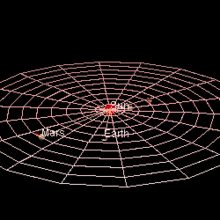
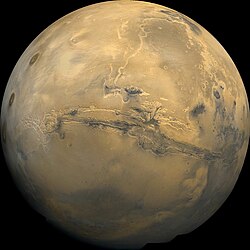
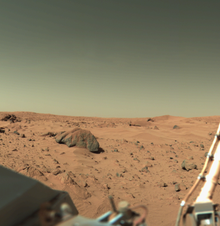

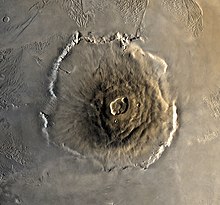
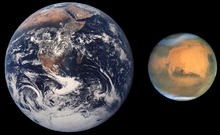


1 comment:
Alasan Kenapa Kamu Harus Bermain Judi Di Museumbola
* Permainan Lengkap dari A sampai Z
* Opsi Deposit Banyak Seperti Bank, E-Cash , PULSA
* Semua Rekening Bank termasuk Bank Daerah Bisa Di Daftarkan
* Bonus Banyak
* Deposit 2 Menit
* Withdraw 5 Menit Paling Lama
* Cs Professional 24 Jam Online
Daftar Slot Via Dana
Link Alternatif Museumbola
Judi Bola Online
Slot pulsa tanpa potongan
Demo Slot Habanero
Post a Comment